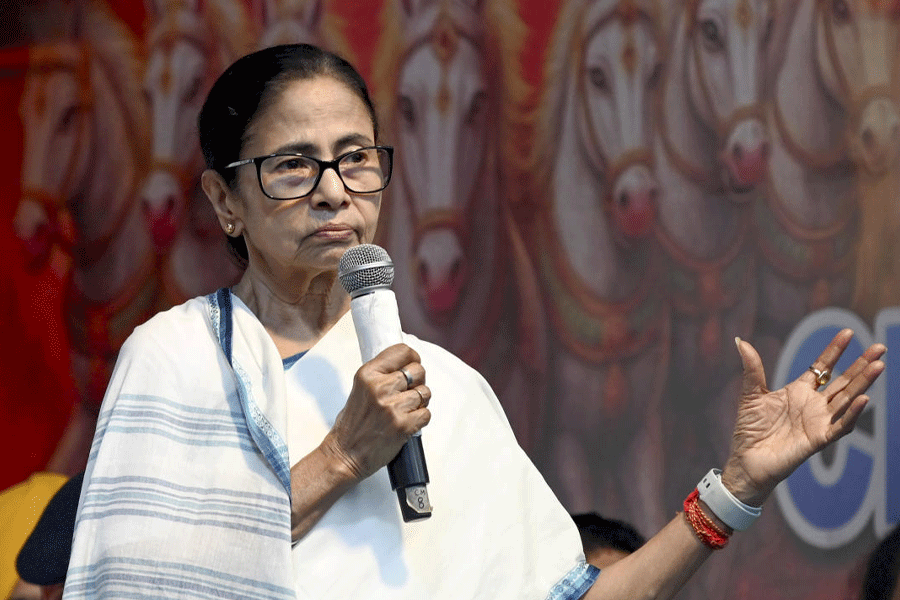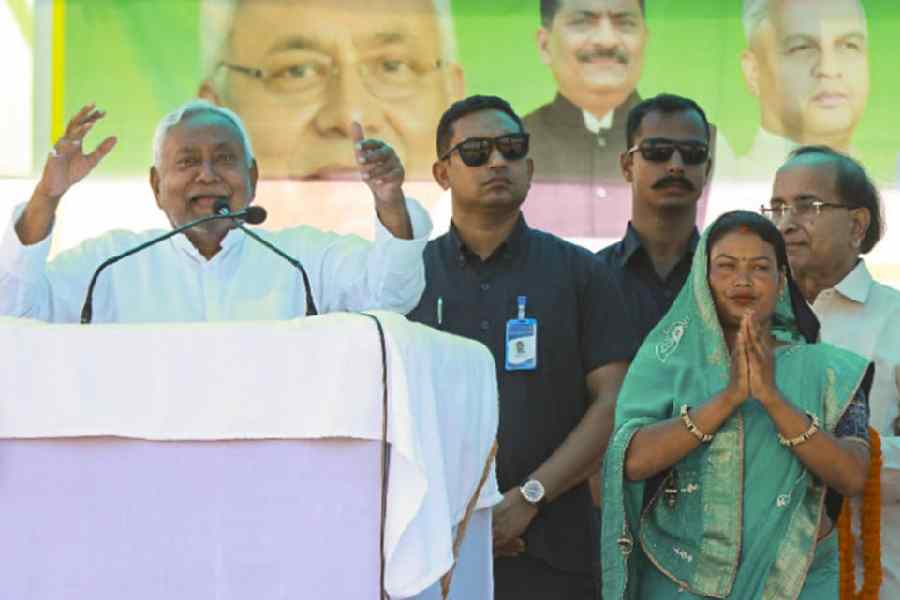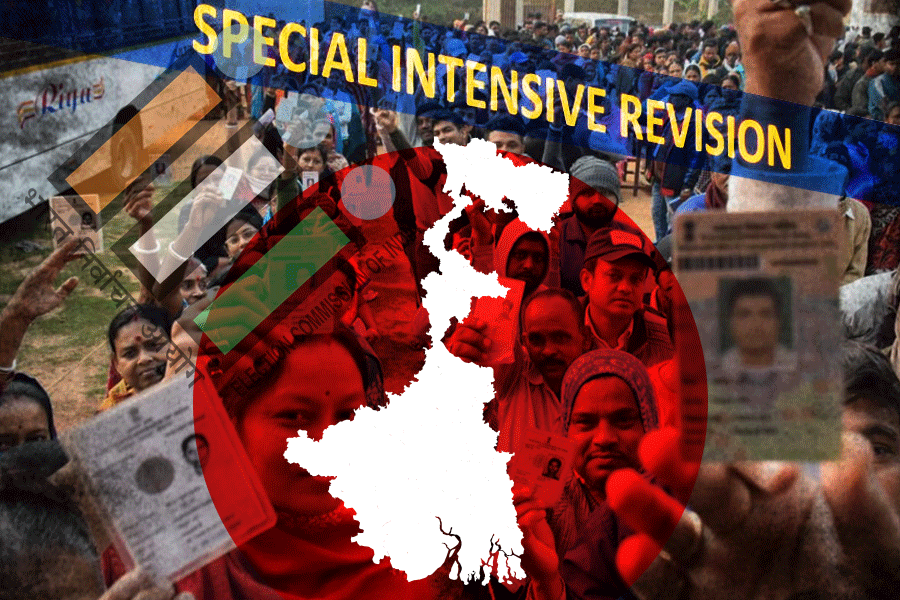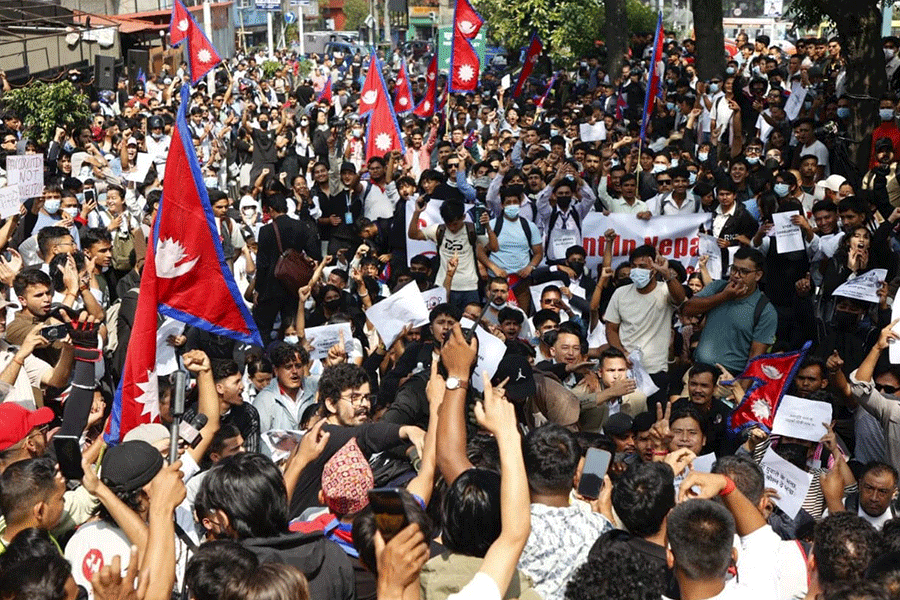 |
| Tech-Trap: A typical scene in downtown Tokyo, the new haven for Indian software professionals (AFP) |
A temporary teaching assignment had me waking up at the ungodly hour of 6, rushing out some 20 minutes later all bleary-eyed and foul-mouthed to the nearest station that would get me to school an hour and three train changes later. The only consolation were the hordes of fellow bleary-eyed Japanese salarymen and women that jammed the trains with me — happy assurance that I wasn’t the only idiot around.
Not much happens on Japanese commuter trains — everyone is uniformly well-behaved, no fighters, no gropers, no enterprising pickpockets, not even a single starer. Trains run as scheduled and 60 minutes can be a disappointingly unentertaining long time. Unless of course you happen to have an American evangelist chatting up an Indian engineer in the seat next to you. The conversation, which I shamelessly eavesdropped on possibly because it was the only one I could follow effortlessly, was fun. Of course the evangelist and the Indian didn’t mean it to be that way at all. Here’s just a bit of it:
Evangelist: “Where are you from?”
Indian man: “India.”
Evangelist: “India... great. I’m from the United States.”
Indian man: Smiles uninterestedly.
Evangelist: “So what do you do?”
Indian man: “I am a software engineer... I work with ...” (I’m respecting his privacy here.)
Evangelist: “Hey wow! My dad used to work there!”
Indian man: Smiles weakly... not so impressed with the coincidence.
Evangelist: “Software engineer, huh? India... it’s all about computers isn’t it?”
Indian man: (proudly) “ Haanh... yes... yes... computers are everything in India.”
Then the conversation moved to religion and the American’s church group and the Indian’s Hinduism and all the rest of it. But I got stuck on this bit, because there it was again — “computers are everything in India”— just in case I had missed the point! Just in case I hadn’t heard it a zillion times over in the one and a half years I’ve lived in Japan. And because I’ve heard about India and software ad nauseam I knew that was coming. In fact, even before he said what he did, I knew the man was a techie, and I knew he was in Japan on a short-term project (they all are) and I even knew which part of Tokyo he’d probably be living in.
The Japanese (like a whole lot of Indians who went on to vote out the man who coined the phrase) don’t know India’s shining. Frankly they don’t give a rat’s... well tail... about India. But now even they’ve caught on to the all-important all-consuming fact that ALL Indians are software geniuses and all of us spend our time writing Java, answering phones in fake accents and back-officing for the Western world.
The Asahi Shimbun (English edition), distributed in Tokyo with the International Herald Tribune, carried an eye-opening piece recently about India entitled, “India now discovering middle class.” I’m not going into that piece — it was an editorial comment — but here’s a joke the writer related, that he said symbolised a “feel-good India mind-set that everyone is talking about these days”. The joke: “Half of computer-related intellectual property rights belongs to Indians. The computer language is a string of 0s and 1s. Since the zero was invented by an Indian, half must go to India, they say.” Whose joke is this anyway?
That’s the Asahi Shimbun at one end. At the other, you have the regular people — the salarymen and homemakers who I teach conversational English to — who are all surprisingly in the know about our now legendary software skills. A middle-aged salaryman making his way through the construction of five sentences about his recent vacation to India said: “Early in the morning I was surprised to see [from the train window... he was travelling across northern India] lots of men sitting on the train tracks, they all had small tins with them... I couldn’t see what they were doing.” He followed that up with: “I did not visit South [India] if I had, I would have seen many people with computers.”
Right. Men with tins in their hands defecate on rail tracks in northern India, while veshti-clad, strapping young men and demure young women with coconut-oiled hair rush up and down the streets of Chennai and Bangalore clutching their IBM notebooks in one hand, frantically writing new codes on their palmtops with the other. And the middle-aged salaryman isn’t the only one who believes that — Salon, a US-based left-leaning current affairs website — actually calls Chennai the “Ground Zero of globalisation”.
Even as I was getting over my student’s five sentences, my school manager came over to discuss a teaching schedule. Caught in a convoluted hours and timings calculation, he — an American of Spanish descent — suddenly said: “Hey, I don’t need to work all this out for you... I assume you are very good at math.”
Me: “No I’m not...Actually, I’m really very bad at it.”
He: “Surprising! I thought all Indians were great at math!”
Of course we are. All Indians except me — I barely made it to the 45 per cent pass-mark in my ICSE math paper — are brilliant with figures.
Eighteen months in Japan and I realise that I’m staring the new Indian stereotype in the face right here in the heart of Tokyo. He’s of medium-height, speaks a south Indian or Maharashtrian-accented English, has worry lines creasing his forehead, carries a laptop bag, dresses in heavy winter clothing even as summer advances, lives in the Yokohama area about 40 minutes out of central Tokyo and is earning more yen than he probably knows what to do with during a six-to-eight-month stint in Japan.
Remember though, he’s just a recently-created stereotype. Japan’s Indian community — largest in numbers in Tokyo, Kobe and Okinawa — has been in existence for some five to six decades before the Shining India techies landed here. And they have been doing a whole lot of very different things, like setting up restaurants and small businesses; establishing schools and architecture firms or working as professionals in accounting and law firms.
Tucked into a corner of the Ginza district — Tokyo’s wide-avenued upscale shopping and dining area, home to a fabulous five-storey Mikimoto showroom and the grand old Kabuki theatre building among other yen-happy spots — is Nair’s Restaurant. Long queues of Japanese stand patiently outside this kitschy 40-seater restaurant serving possibly Japan’s best puliserry and rice and other Kerala kozhi curries to the strains of Hindi film songs (most of them from “The Worst of Bollywood” collection). Ayyappan M. Nair — after whom the restaurant is named — came to Japan some 60 years ago to study structural engineering. He took part in the Indian freedom struggle, fighting alongside Netaji Subhas Chandra Bose, according to his son Gopalan Nair. Along the way Nair-san (as Ayyappan is fondly referred to) married a Japanese woman and established the hugely successful Nair’s Restaurant.
Or take 33-year-old Ajay Das from Ranchi, who received his doctorate in special education from Melbourne University three years ago. He now heads the Tokyo International Learning Community, the only school in Japan for foreign children with mental or physical disabilities. The school, a member of the Japan Council of International Schools, provides special education to children with special needs.
In Kobe, the turbanned and bearded 38-year-old Kiran Sethi is a high-profile ‘Kobekko’, or son of Kobe. As president of the Junior Chamber of Commerce (Jaycee) in Japan he is working to demonstrate the advantages of a diverse culture. His father moved from Bombay to Kobe in 1959 and set up a trading company that the family still manages today as a thriving import-export business.
These aren’t isolated Indian success stories, this is how much of the Indian community in Japan lives — quietly successful, though totally unskilled in computer codes and programme writing and all kinds of complex zero-obsessive math. Not that the new Indian stereotype myth-feeders are listening.
So who are these feeders anyway? The media for one, starting out there in America and trickling down to Tokyo, helped along the way by a growing Indian IT presence right here in Japan. Wipro, Infosys, Satyam and TCS all have offices here, with Wipro being the largest Indian IT company in Japan. (Azim Premji, a regular visitor to Tokyo, admires the city but reportedly isn’t big on Japanese food.)
No talk of the American media’s role in creating this new stereotype can be complete without a reference to CNN’s Lou Dobbs Tonight with its horror stories of Indian monsters in Bangalore and Gurgaon waiting to swallow up millions of outsourcing jobs; Bloomberg’s periodic reports on The Great Indian Economic Miracle Just Round the Corner; Salon’s sob stories about displaced US tech workers wandering miserably across America in search of jobs and food coupons; Thomas Friedman in the New York Times with his “Golden Enclave” reports on Bangalore (“golden” because tech companies in “India’s Silicon Valley” have created their own “private enclaves away from the country’s bad governance”). References that all come together to create a stereotype that has become as annoyingly familiar as Shah Rukh Khan’s hamming once used to be.
I have to admit, though, it wasn’t always annoyingly familiar. My earliest encounter with the stereotype was during a job interview over a year ago when I was asked what my husband did. Even before I could reply, my interviewer, a kindly midwestern American woman, half-questioningly inquired if he was “in software...?” I remember feeling pretty excited then that random expats out in Tokyo were aware of our tech success. For a while there I glowed with silent pride for Narayana and Sudha Murthy, Azim Premji and the rest of the brilliant people. At any rate it was better than being quizzed about the usual caste system, water-borne diseases or the authenticity of Lapierre’s City of Joy.
Unfortunately, the warm glow of pride eroded more rapidly than I could have anticipated. Less than a week into my job I answered the same question about a hundred times and by the end of it I’d paranoidly announce my husband’s profession to any and everyone, even before they could ask. I think it was just about then that I began irrationally thinking at least the caste system, water-borne diseases and City of Joy made for slightly more varied conversation than software.
Now, ask me one more question about our software engineers, our Silicon Valley or our masses of English-speaking young people stealing American jobs and I’ll do the one tech thing every Indian code-writer can do blindfolded — hack into your email account and spam you to death.











